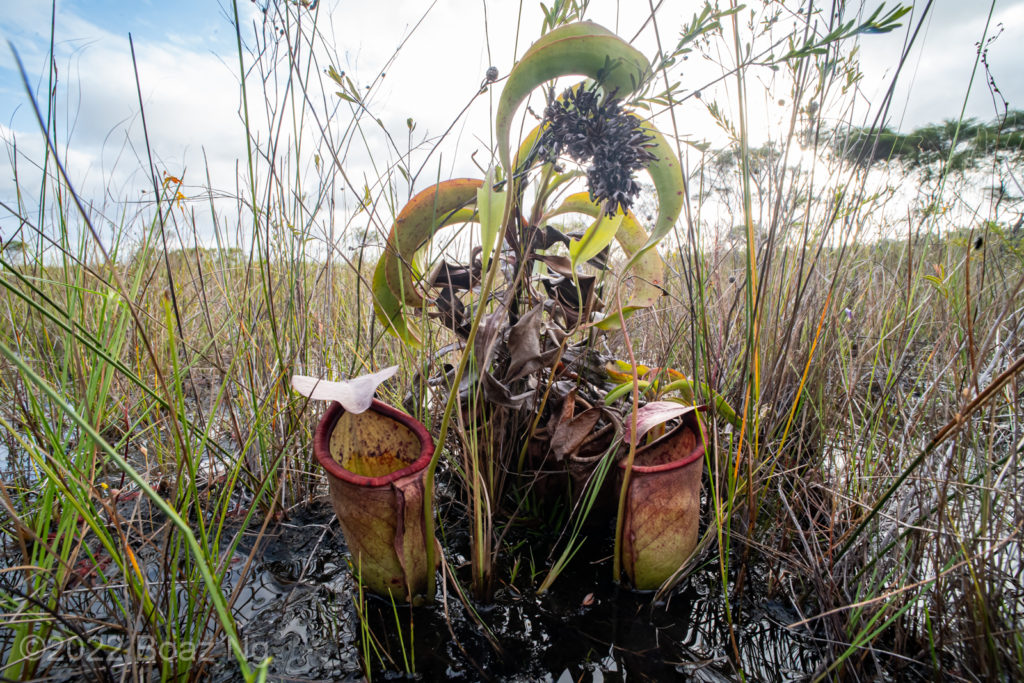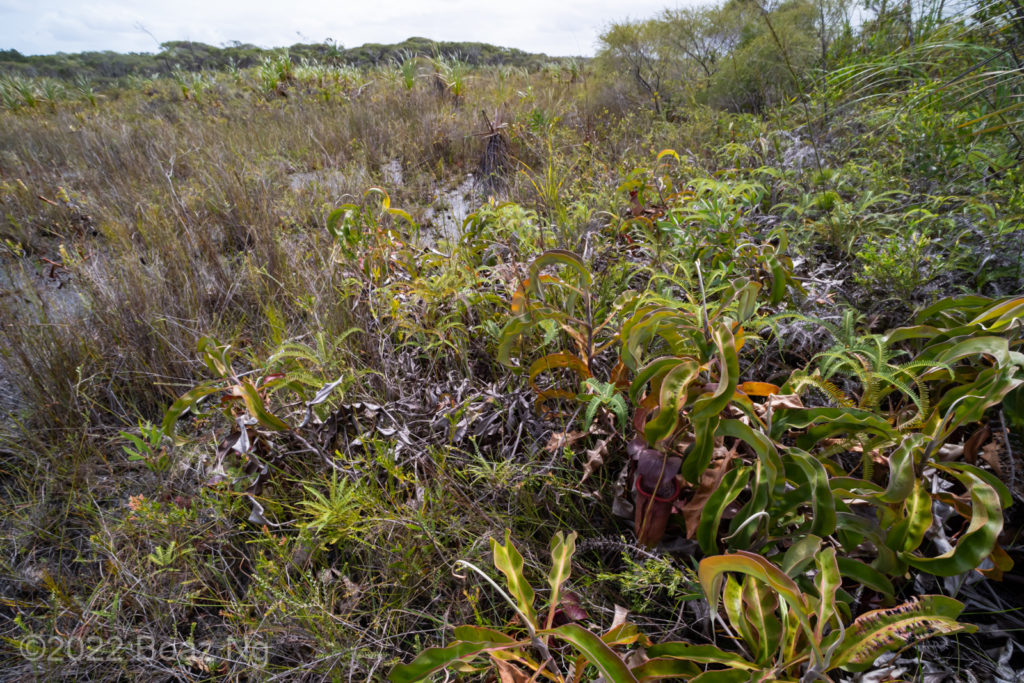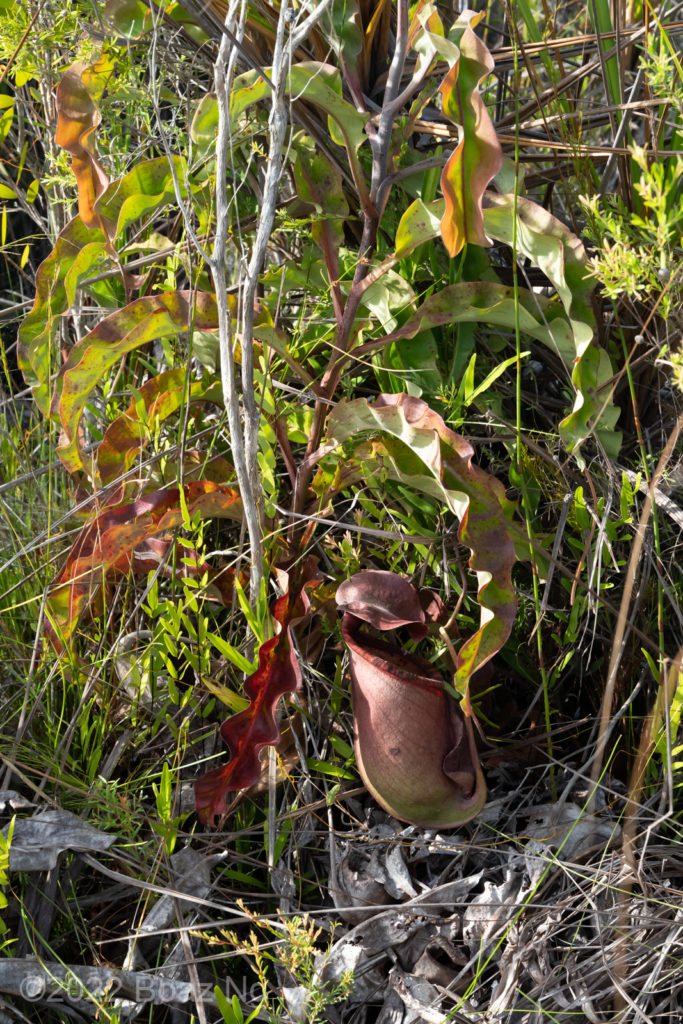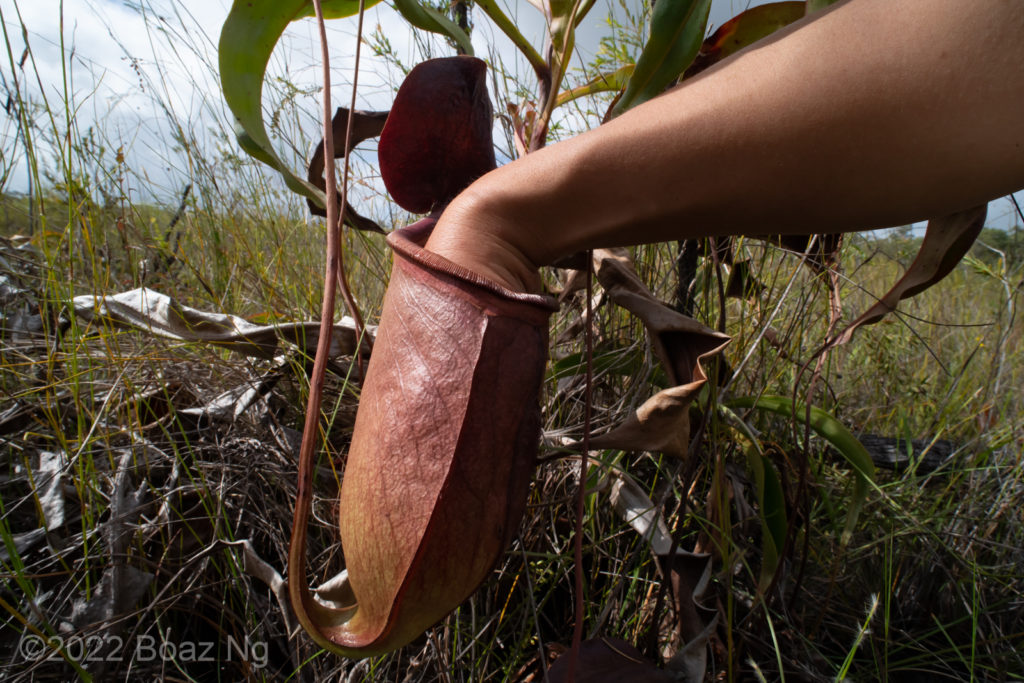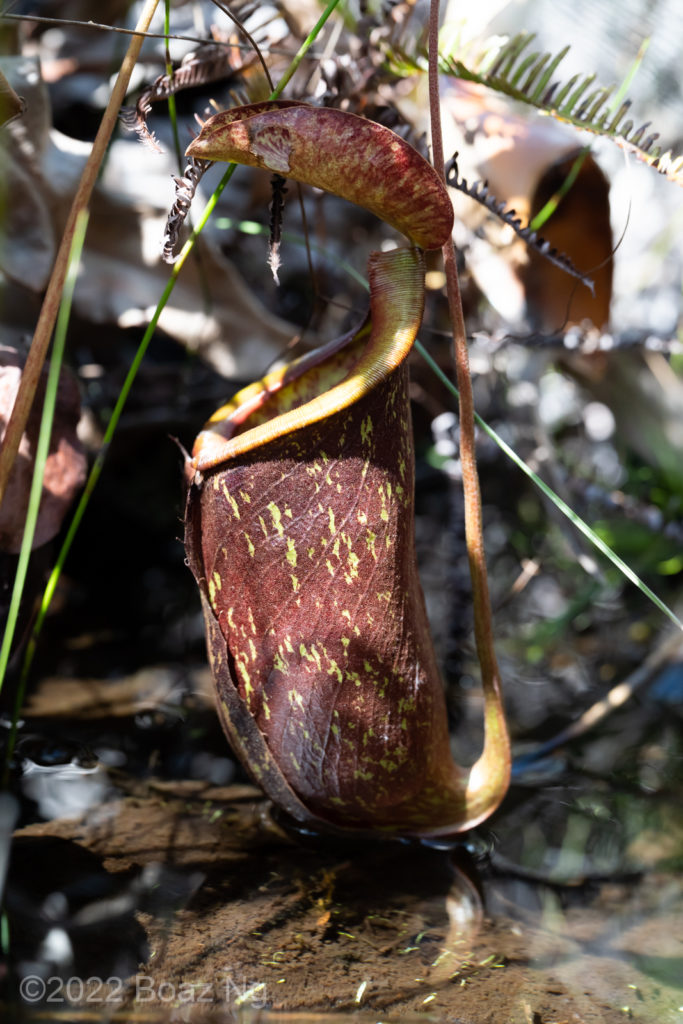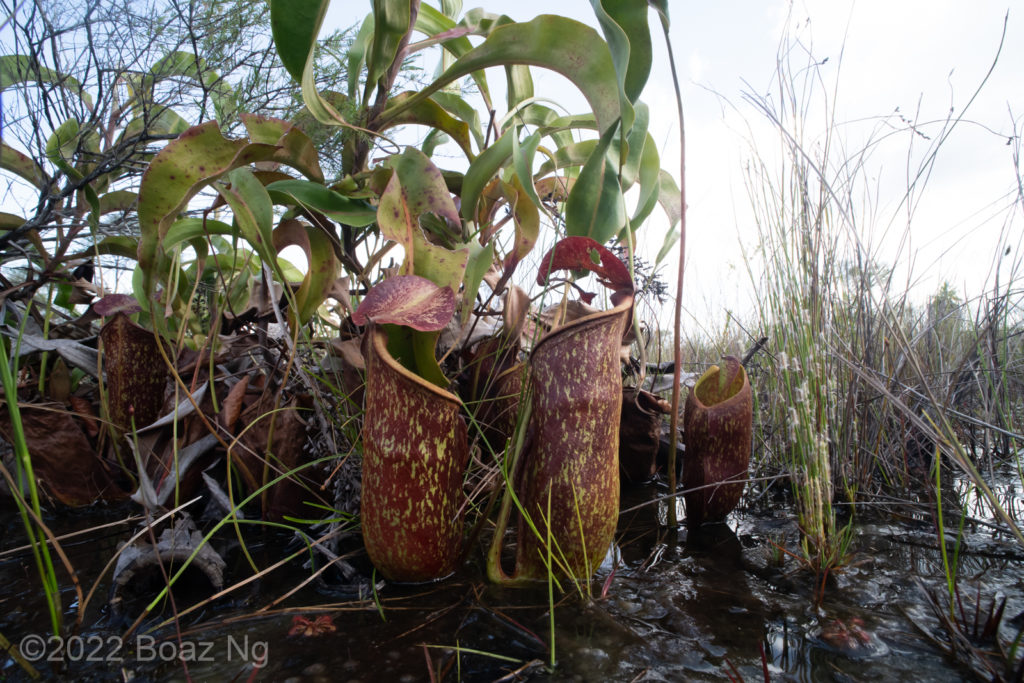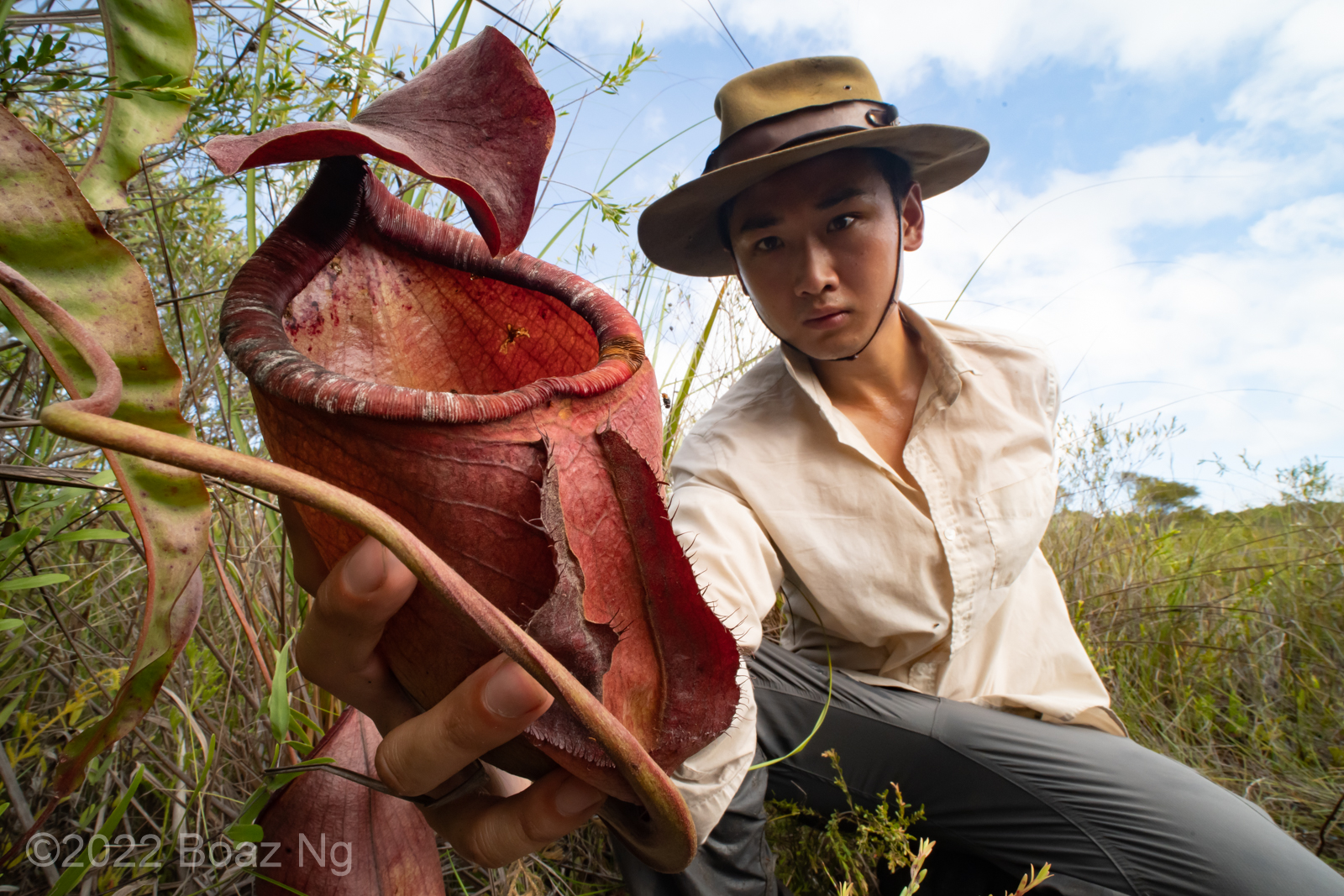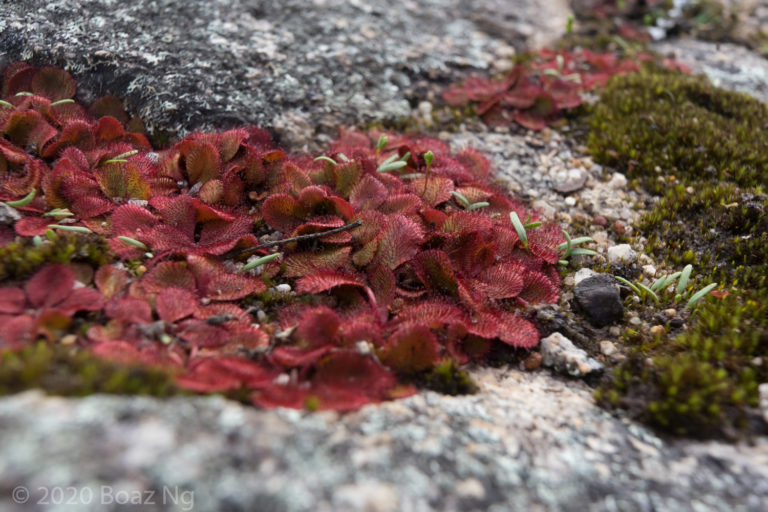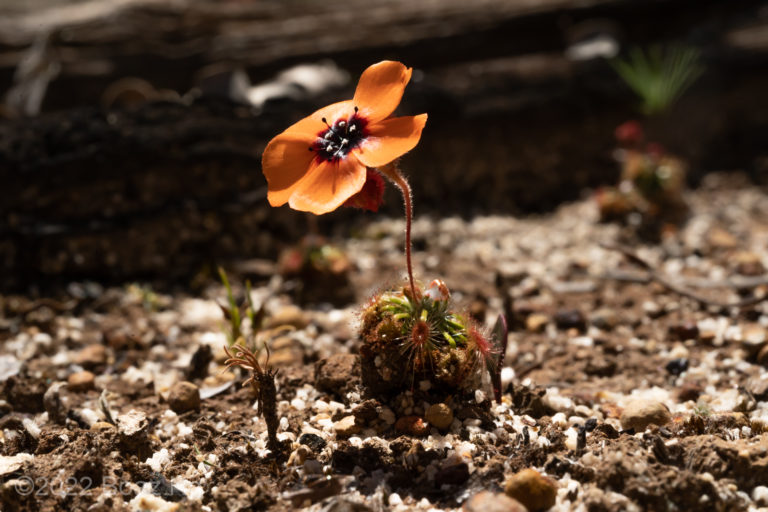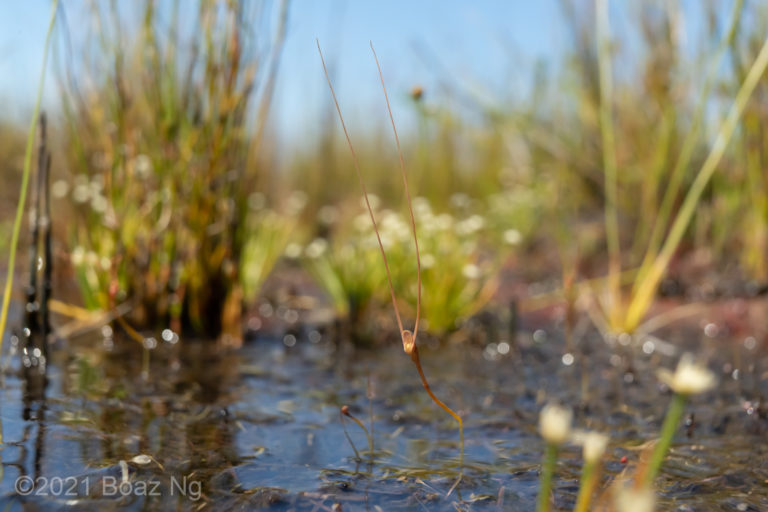Nepenthes rowaniae is one of four Australian species of pitcher plant and is endemic to the tip of Cape York, NE Australia. The species is mainly recognised by its large size and pitchers with a high ‘hip’, which usually rests on the ground.
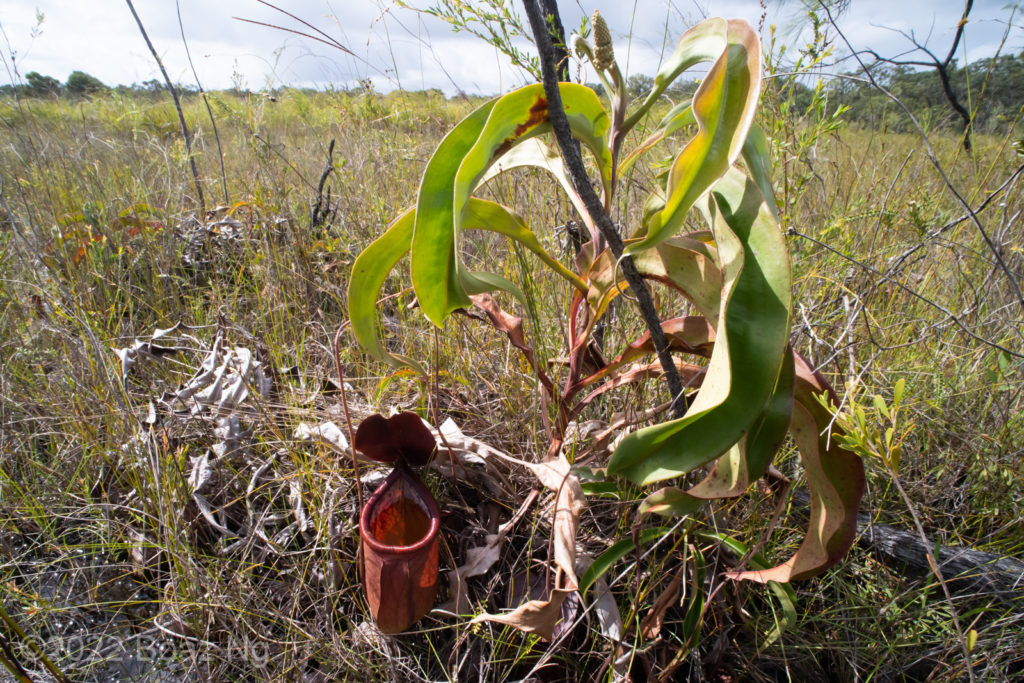
Nepenthes rowaniae is the largest of the Australian pitcher plants. The lower pitchers reach about 20cm in height and 15cm in circumference. The most important distinguishing feature is the position of the ‘hip’ ridge, which is placed close to, or directly beneath the peristome in the upper section of the pitcher wall. These pitchers are usually widest at the peristome and broad throughout their length. Wavy ‘wings’ are inconsistently present. The lid is roughly the same circumference as the opening. The pitchers are usually a coppery red in colour although mottled specimens are not uncommon. Lower pitchers always rest on the ground. The plants mostly catch various types of ants.
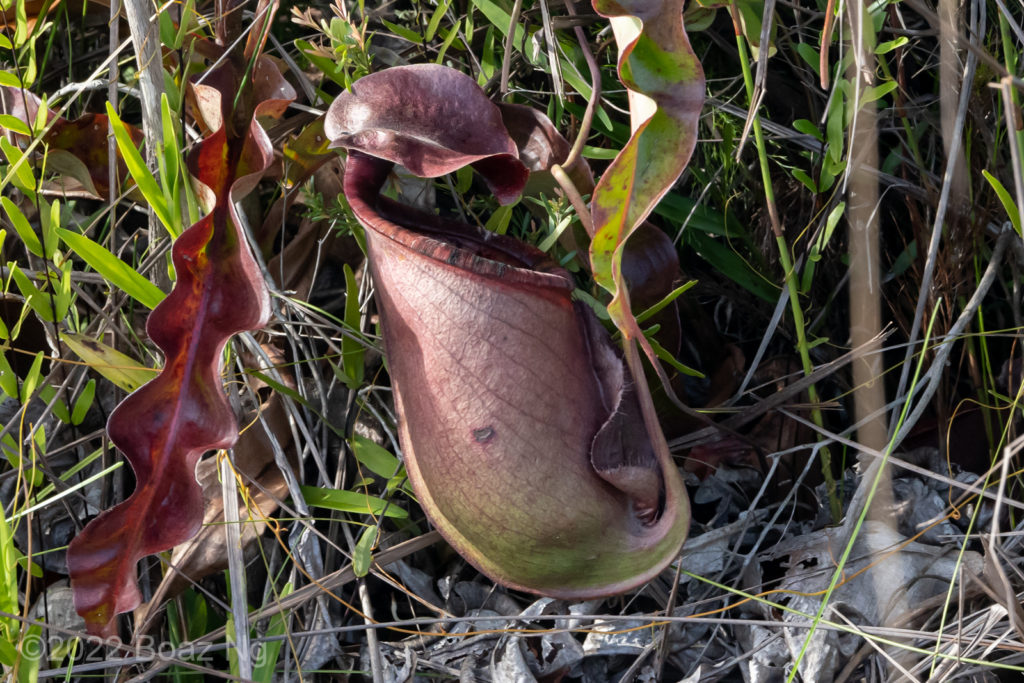
The upper and intermediate pitchers are less commonly produced, and fairly similar in morphology to the lower pitchers. Upper pitchers are broad at the peristome but taper gradually towards the connection with the tendril. The wings are sometimes reduced to pronounced ribs. These pitchers are produced at the end of a long tendril, hanging close to the ground.
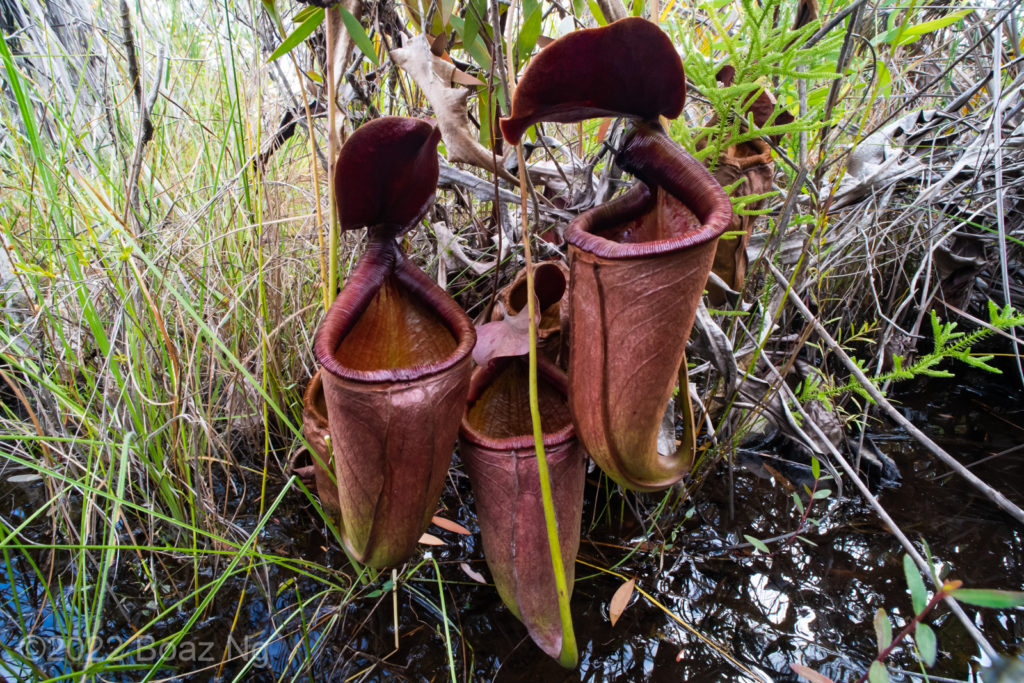
The leaves are large and somewhat variable in morphology. Typically, they are broad, sickle-shaped and have a wavy margin. Many active leaves are maintained on the vine, which usually scrambles on surrounding bushes for support. Without the support of other shrubs, large vines tend to topple under their own weight and grow in a scrambled mess on the ground without issue.
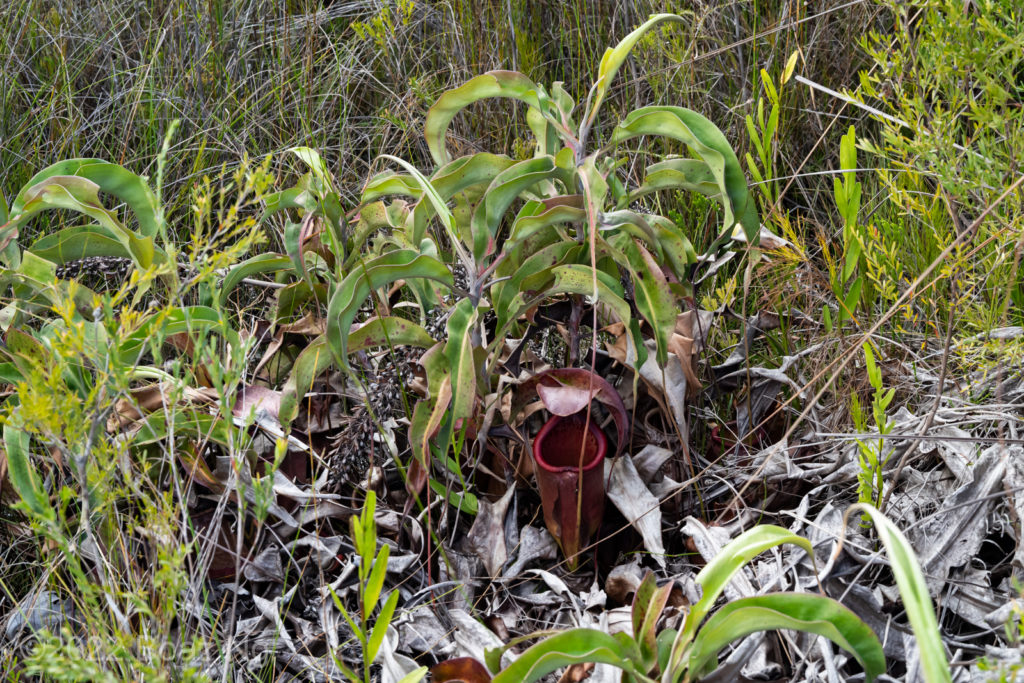
Nepenthes rowaniae occupies a different niche to N. mirabilis. It grows in waterlogged substrates in the exposed swampy floodplain in close proximity to N. tenax (N. mirabilis is found on creek lines and at the forested periphery of swamps). Within the floodplain, it prefers to grow amongst stands of dense but stunted bushes, although individual specimens sometimes grow away from the bushy patches. It is distributed on the tributaries of the Jardine River and Jackey Jackey Creek.
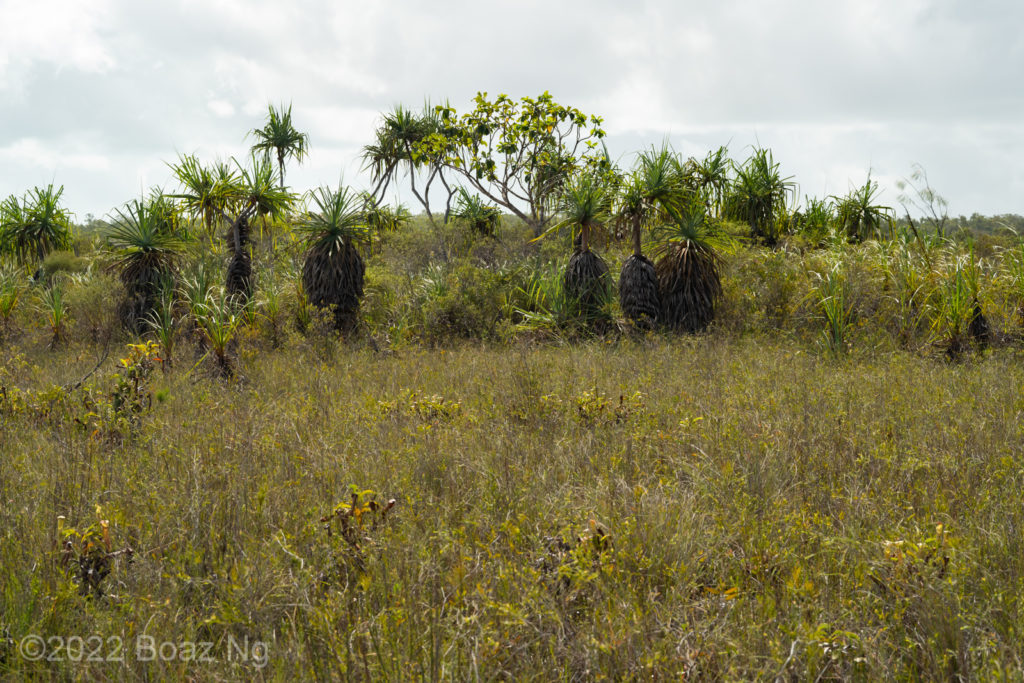
Hybrids between N. rowaniae and N. mirabilis are common, growing both intermixed with pure species within the bushy patches and the open floodplain. At some sites, the majority of plants appear to show introgression with N. mirabilis. These hybrids can strongly resemble N. rowaniae but can be distinguished with a close examination of the pitcher morphology. The location of the pitcher ‘hip’ is a fairly reliable indicator, with lower pitcher hips suggestive of introgression from N. mirabilis. As with many recently diverged taxa, there is a degree of flexibility in the species descriptions amongst different authors. It should be specifically noted that Clarke & Kruger, 2005, in their redescription of the species, accept plants with pitcher hips down to half the length of the pitcher.
